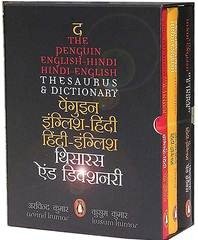इंग्लिश में मुहावरा है – रूल आफ़ थंब (rule of thumb).
(संकलित)
A rule of thumb is a principle with broad application that is not intended to be strictly accurate or reliable for every situation.It is an easily learned and easily applied procedure for approximately calculating or recalling some value, or for making somedetermination. Compare this to heuristic, a similar concept used in mathematical discourse, psychology, and computer science, particularly in algorithm design.
-Origin of the phrase
The exact origin of the phrase is uncertain. The earliest citation comes from J. Durham’s Heaven upon Earth, 1685, ii. 217:”Many profest Christians are like to foolish builders, who build by guess, and by rule of thumb.” The phrase also exists inother languages, for example Swedish tumregel, Norwegian and Danish tommelfingerregel, sometimes in the variant “rule offist”, for example Finnish nyrkkisääntö, German Faustregel, Hungarian ökölszabály or Dutch vuistregel, as well as in Turkishparmak hesabı (rule of finger) and in Persian “قاعده سرانگشتی,” which is translated as finger’s tip rule. This suggests that it hassome antiquity, and does not originate in specifically English-language culture.
-Thumb as measurement device
The term is thought to originate with carpenters who used the width of their thumbs (i.e., inches) rather than rulers formeasuring things, cementing its modern use as an imprecise yet reliable and convenient standard. This sense of thumb asa unit of measure also appears in Dutch, in which the word for thumb, duim, also means inch. The use of a single word orcognate for “inch” and “thumb” is common in many other Indo-European languages for example, French: pouce inch/thumb;Italian: pollice inch/thumb; Spanish: pulgada inch, pulgar thumb; Portuguese: polegada inch, polegar thumb; Swedish: tuminch, tumme thumb; Sanskrit: angulam inch, anguli finger; Slovak: palec, Slovene: palec inch/thumb, Czech: palecinch/thumb.
Another possible origin of the phrase comes from measurement, in particular in agricultural fields. The plants need a fairlyprecise depth to seed properly, whether planted from seed or being replanted, but the depth can sometimes be estimatedusing the thumb. That is, a rule “(measurement) of thumb”. According to Gary Martin, “The origin of the phrase remainsunknown. It is likely that it refers to one of the numerous ways that thumbs have been used to estimate things—judging thealignment or distance of an object by holding the thumb in one’s eye-line, the temperature of brews of beer, measurement ofan inch from the joint to the nail to the tip, or across the thumb, etc. The phrase joins the whole nine yards as one thatprobably derives from some form of measurement but which is unlikely ever to be definitively pinned down.”[4]
Another theory is that the coarseness of ground flour produced by grist mills in Old England was assessed by the miller’srubbing it between his thumb and forefinger.[5]
-Thumb used for regulation
It is often claimed that the term’s etymological origin lies in a law that limitedthe maximum thickness of a stick with which it was permissible for a man to beat his wife. British common law before the reign of Charles II permitted a man to give his wife “moderate correction”, but no “rule of thumb”(whether called by this name or not) has ever been the law in England. Such “moderate correction” specifically excluded beatings, allowing thehusband only to confine a wife to the household.
Nonetheless, belief in the existence of a “rule of thumb” law to excuse spousalabuse can be traced as far back as 1782, the year that James Gillray published his satirical cartoon Judge Thumb. The cartoon lambastes Sir Francis Buller, a British judge, for allegedly ruling that a man may legally beat his wife, provided that he used a stick no thicker than his thumb, although it is questionable whether Buller ever made such a pronouncement. The Body of Liberties adopted in 1641 by the Massachusetts Bay colonists states, “Every married woman shall be free from bodily correction or stripes by her husband, unless it be in his own defense from her assault.”
In the United States, legal decisions in Mississippi (1824) and North Carolina (1868 and 1874) make reference to—and reject—an unnamed “old doctrine” or “ancient law” by which a man was allowed to beat his wife with a stick no wider than his thumb. For example, the 1874 case State v. Oliver states: “We assume that the old doctrine that a husband had theright to whip his wife, provided that he used a switch no larger than his thumb,is not the law in North Carolina.” In 1976, feminist Del Martin used the phrase”rule of thumb” as a metaphorical reference to describe such a doctrine. Shewas misinterpreted by many as claiming the doctrine as a direct origin of thephrase and the connection gained currency in 1982, when the U.S.Commission on Civil Rights issued a report on wife abuse, titled “Under the Rule of Thumb”.

Comments